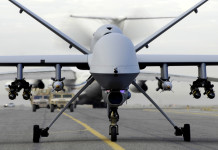MIT engineering students Michael Farid, Kale Rogers, Luke Schlueter and Braden Knight invented a completely automated mini-restaurant referred to as Spyce Kitchen, that will make fast food even faster. It features a fridge, dishwasher, stovetop, and a robotic chef that can prepare and serve meals with fresh ingredients in under 5 minutes.
The crew won the $10,000 “Eat it!” Lemelson-MIT undergraduate prize, an award for the nation’s top two collegiate inventors in food technology, for the invention, which presently serves college students in an MIT dining hall. They plan to pilot the mini-restaurant in dining halls at a handful of different Boston universities as soon as it receives USDA and FDA approval.
In an email, the team informed us that “Our vision is to transform the meaning of fast food”
Ingredients, stocked by the Spyce workers each day, are automatically measured and disbursed on a conveyor belt. They are then transported to one of 4 automated pots that blend and cook the ingredients all-in-one.
First, you, the customer, order a meal using a smartphone app or the touch display next to the machine. The robot currently features only 5 meals: chicken-bacon sweet potato hash, winter veggie mac and cheese, shrimp andouille jambalaya, chickpea coconut curry on couscous and chili-lime beef with sesame rice. Two meals can be made at the same time.
You’ll also be able to customise the sauce, quantity and ingredients. Then, you get a bowl from the side and place it underneath one of the cooking pots.
As soon as that is completed, the system dispenses the meal on a plate, and the pot rotates to the sink and cleans itself. The kitchen utilizes an array of sensors that monitor the meals’s quality and temperature.

The group believes the Spyce Kitchen may revolutionize the fast food industry because it does not depend on any human workers and produces nutritious meals at low costs. It could possibly serve all types of bowls, like pasta, rice, stir-fry, pad thai, curry and quinoa.
The machine only takes up 20 sq. ft of space and can produce half the amount of meals as the average full-sized fast food restaurant, the inventors say.
Last year, UK-based Moley Robotics and Shadow Robot Company unveiled their automated kitchen, which encompasses a pair of robotic arms that can make over 2,000 dishes. There’s additionally the Fu-A-Men (Fully Automated Ramen) restaurant in Japan, which can make eighty bowls a day.
Both of those only include robotic arms, not appliances, which makes the MIT‘s team kitchen notably unique.
With advancements like Spyce Kitchen, Jetson’s style food ordering does not seem too far-fetched.
See the Spyce kitchen’s video below:














Great, first they took the factories and now they are taking the service sector. Where are Americans supposed to find jobs next? Without manufacturing my community fell back on the service sector. Some of the call centers were eventually moved overseas(along with our manufacturing jobs). Now most people in my town work at the Wal Mart or one of the fast food restaurants. If those go to these robots then I don’t know what will happen to the folks there.
Good question. But I think there will be a shift. Yes, the minimum wage people will suffer. People will be needed to clean and maintain these machines, that can’t be moved overseas (unless that too is done by robots)